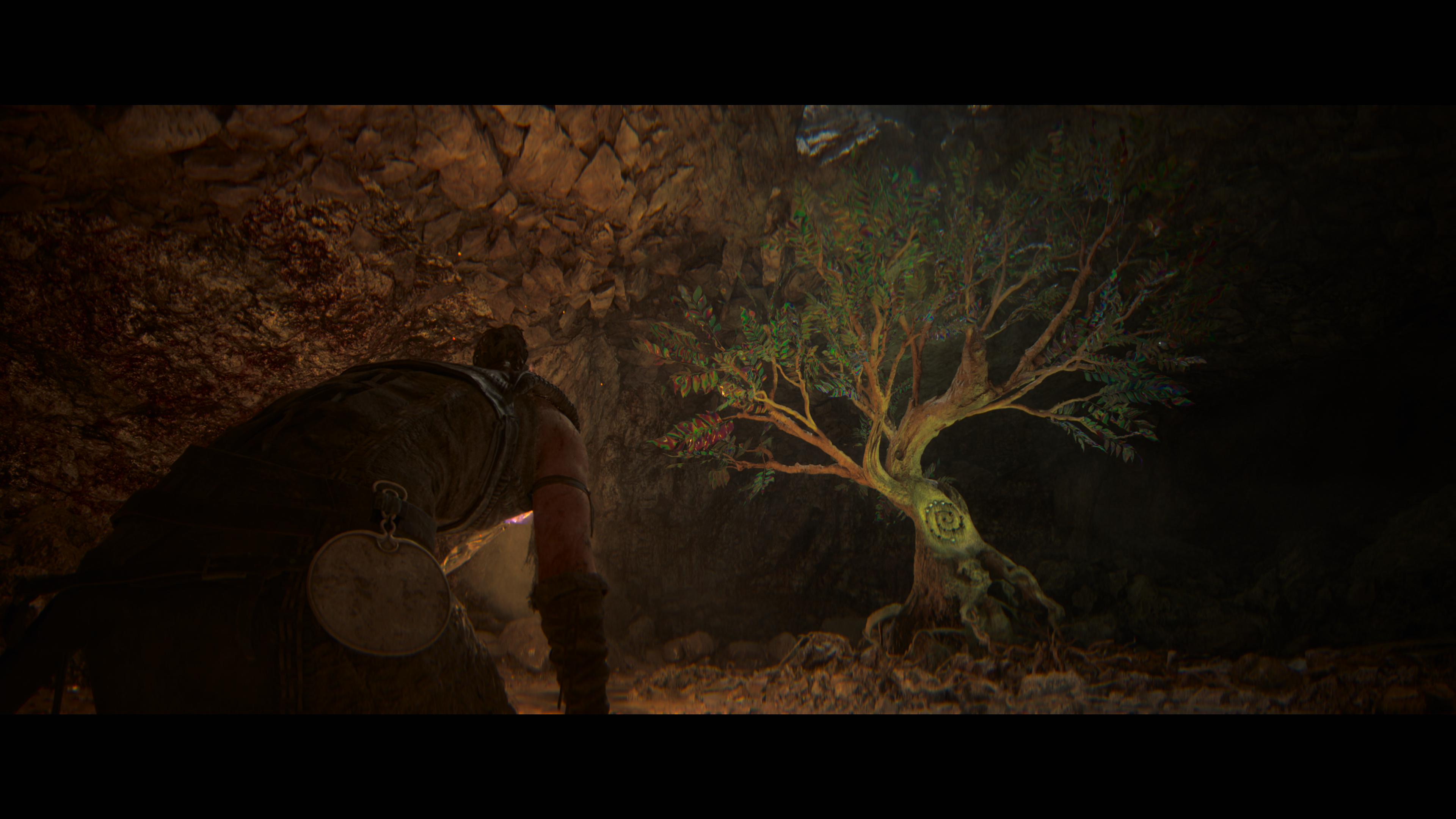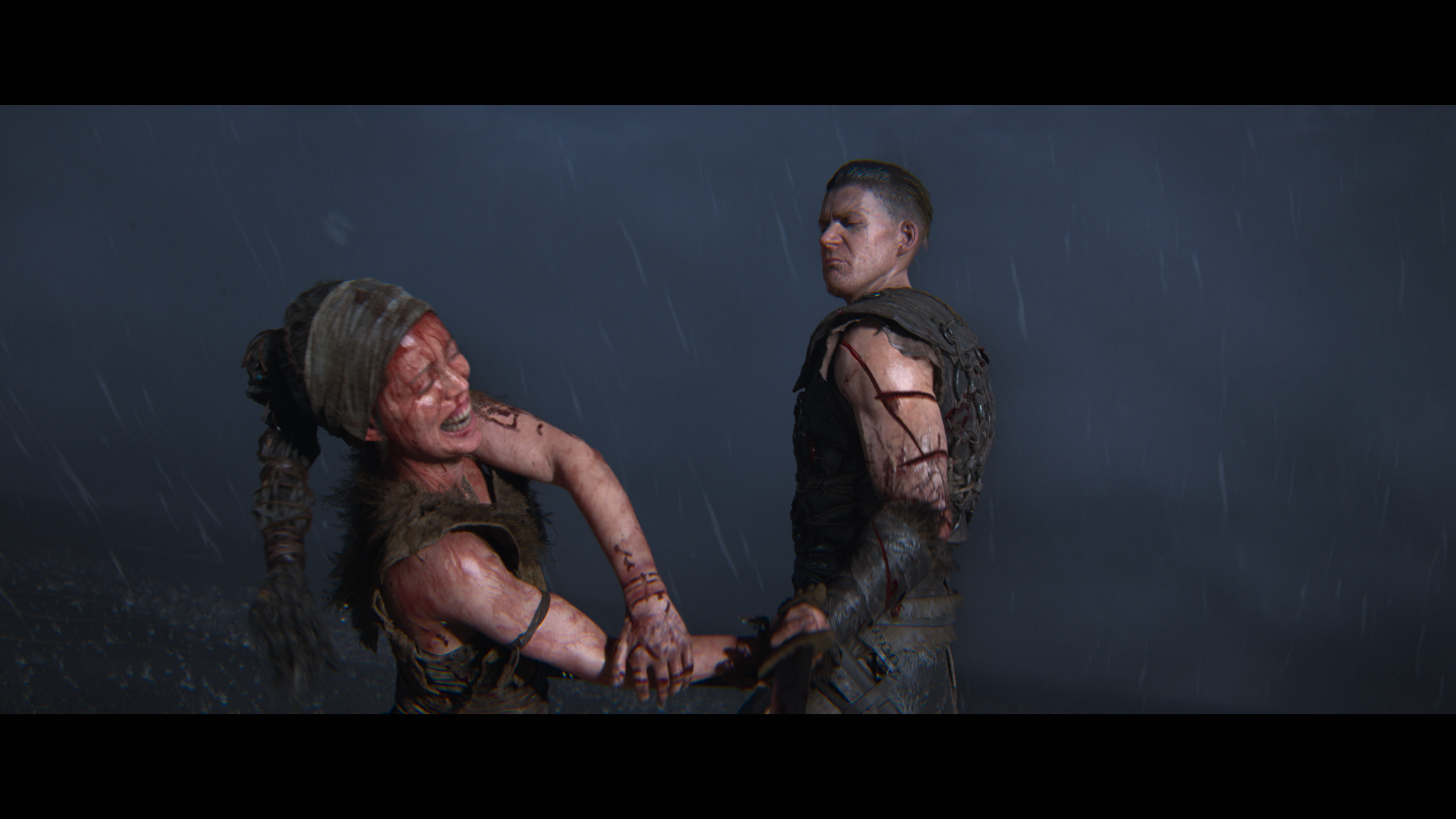
For us, Senua’s journey began back in 2017, but her battle had raged on long before we were able to meet her. In Hellblade: Senua’s Sacrifice, we got to see how Senua fought for the soul of her lover who had been brutally murdered when raiders came to her village. Her march through Helheim was also a walk through the twisted reality of Senua’s mind as The Darkness constantly threatened to consume her. It was a mind-bending, reality-twisting adventure that gave players a glimpse into the life of someone who lives with psychosis, as well as a fully captivating story about strength and never backing down. It was a journey unlike any other I’ve played.
Senua’s Saga: Hellblade II takes us through the next chapter in Senua’s life, though this time the narrative has shifted. While Senua is still haunted by the demons of her past, she has come to accept The Darkness, her psychosis, is a part of her, but it doesn’t tie her down. She possesses the ability to see the world through the most unique lens; she sees what others cannot see, feels what others cannot feel, and can do what no other can do.
The game opens up on the stormy waters of the Atlantic where Senua is aboard a slaver’s vessel headed to an unknown land, but she’s not there by accident. She’s there to put an end to these slavers to save her people. However, what she finds on the other end of this boat ride is a horror far bigger than anything she could have ever imagined. The realities of this land are far more twisted and grim than her literal battles through hell as this time around her fight is with humanity’s greatest faults. There’s a lot of symbolism throughout the game, in Senua’s actions, in why she’s here, and what she’s fighting for.
The biggest difference this time around is that Senua won’t have to face this battle alone. She has companions to help guide her, pull her from the dark, and keep her from giving up, and I don’t just mean the ones in her head. Of course, they have their own motives, but they help her nonetheless. I also noticed a change in the tone of the voices in Senua’s head. Where they were almost constantly telling Senua to turn back, telling her she was going to fail in Senua’s Sacrifice, Senua’s Saga sees, or rather hears, those voices trying to encourage her. Of course, they still express their doubts, and she’s often taunted by how bipolar they sometimes are, as well as the memories of Dillion and her father.
The best way to experience Senua’s journey is with headphones for full 3D binaural sound. This was used in the first game as well to help immerse the player by fully surrounding them with Senua’s thoughts and the looming darkness. This really helps to bring Senua’s psychosis out, making you feel like you’re the one hearing the voices and the sounds. Ninja Theory continued their work with Professor Paul Fletcher at the University of Cambridge, as well as those who have lived experience with psychosis, to bring Senua’s perspective of the world to life in a way that feels true and thoughtful. Being on the edge of my seat was more than just a figure of speech as I was literally teetering, waiting for whatever I felt was right behind me.
The setting of Senua’s Saga is a stark contrast to her time in Helheim. The game takes place in the beautiful island country of Iceland, with incredible vistas that have been captured using photogrammetry and digitization. The world is full of all kinds of color and the sun shines bright across the fields and the mountains. The use of Unreal Engine has no doubt played a huge part in bringing even the tiniest specks and pebbles into great detail, with pristine physics. Costumes for the characters, as well as props, were also hand made in the real world before being put into the game, capturing even the smallest details. The costumes are very much a reflection of the characters that wear them, representing where they come from and the kind of lives they live.
For those who have played the first game, Senua’s Saga will feel very familiar. (If you haven’t played the first one, please do.) It’s a classic case of “if it ain’t broke, don’t fix it.” The game plays virtually the same as the first one, with simple combat and interaction mechanics. The biggest difference is how little combat there is in comparison to the first game. Sure, you’ll go through a sequence of taking down a string of enemies, but this game focuses much more on the narrative experience as well as the unique way in which Senua sees and interacts with the world. I was excited to see the lorestones make a return, telling more stories of the Northmen’s mythology, and there are other hidden secrets to find that give advice or tell stories of Senua’s homeland.
The small team at Ninja Theory pride themselves on creating incredible, immersive, and deep stories. To quote the studio mission, they like “to craft life-changing art with game-changing tech,” and the Hellblade games have been that mission successfully realized. Senua’s Saga took me on a journey full of deep emotions, strength, and discovery hitherto unseen except in its predecessor.
I’d like to say thanks again to Ninja Theory and Xbox for providing us the opportunity to dive back into Senua’s story. I’ve been looking forward to this for what feels like an eternity, and I’m so glad it lives up to the reputation of the first game. This game isn’t particularly long, able to be completed in 8-10 hours, even for a completionist. I am a bit sad that there is no physical release for this one, part of the ever-growing trend of games only being released digitally. That and the short runtime (and the fact the first game released at just $30) makes it a little hard for me to say the $50 price tag is really justified.
Senua’s Saga: Hellblade II
Excellent
Senua’s Saga: Hellblade II is a stunning and immersive storytelling experience that really puts the player into the mind of its titular character. It’s even more narratively-focused than the first game (not to its detriment), with a bigger emphasis on how Senua sees and interacts with the world around her. The whole experience from start to finish has been beyond memorable.
Pros
- Upholds the standard that Senua’s Sacrifice set with immersive storytelling
- Kept gameplay simple and familiar
- Beautiful Icelandic setting full of color and detail
Cons
- Digital only


